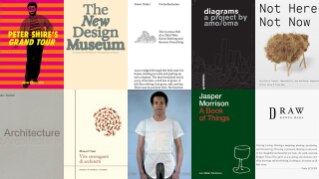Remo Bodei, Laterza, Roma-Bari 2009 (pp. 136, € 14,00)
Do things belong to us or is it really the other way round? If we take the first assumption we end up on a course already followed that necessarily culminates in nihilism, i.e. in a universe where the world and things lose all autonomous meaning before the unilateral and subjugating sway of technology. Remo Bodei reminds us of the life of things (La vita delle cose) in a small but profound and captivating book published recently by Laterza. Once again, Bodei leads us inside the fabric of reason to broaden its horizons and make sure it is up to its universal tasks.
As he goes, Bodei allows himself to be guided not only by philosophy but also, of course, by art and literature. The Search of Lost Time, for example, helps us to question the only apparent fixedness of the world, showing that the stability of things depends on an original compression of their complexity and their semantic reach. Nominating things via language provides us with a wholly simplified experience of them, although this experience does, of course, have its advantages. It is what allows us to say that we have a recognisable world that is structured with discreet entities such as chairs, beds, etc. Along this path, however, the world of objects becomes a totally reified one in which things have lost the memory of themselves. Mislaying their history along the way, they become available for use by mankind, opposing no resistance.
In their various applications, languages sometimes carry the memory of this dual possibility concerning the state of things that populate the so-called objective world. Bodei reminds us that the Italian word cosa, meaning "thing", is to some degree the conceptual equivalent of the Greek pragma, the Latin res and the German Sache. These words have nothing to do with the physical object as such, nor even with the current use of the German Ding or the English thing. If, indeed, pragma and its equivalents indicate that which involves or affects me, terms such as Ding or thing, which are more or less equivalents of the Italian word oggetto, instead deal with the world dominated by technology (and not good technology), making itself univocally available to effective action.
How can a "thing" become an "object"? How does this process of transubstantiation come about? It occurs via the emotional or libidinal – to use Freudian terminology – investment in the object. This transition cloaks it with a new significance that overlaps or replaces the previous ones. Something similar sometimes happens with the photographs of our ancestors which, with the passing generations, cease to replace the household gods of old and become quirky, much-loved furnishings. Does this approach to objects, which corroborates their semantic sedimentation, their symbolic colouring, necessarily bring a condemnation of the commodity world? Or should we not recognise that this world too can acquire new meanings that are not market-based? Is this not perhaps – I would add – what some contemporary artists such as Jeff Koons seem to be showing us, and pop art before him? Commodities can also be or become our habitat.
Art, along with philosophy, gives objects back the meaning that has been removed from them by their value for use and exchange. This is what we are taught by the thinker Martin Heidegger, who in his article The Origin of the Work of Art dwelled on the meanings contained in a pair of peasant's shoes painted by Van Gogh. It is along this path that we are taken by the 17th-century Dutch still-life paintings, and also Rembrandt's self-portraits. Indeed, while the successive stratifications of the artist's features in Rembrandt's self-portraits seek to convey the ravages of time, the 17th-century still-lifes make us look at the world of objects sub specie aeternitatis. In both cases, the objects (or subject), with their meanings and their tastes or with their wrinkles and their moles, emanate the eternal passing via the contingency.
Bodei suggests that by following these routes we can renew a loving relationship with the things that make up our everyday world, the terrain of shared meanings, the humble but essential ethos that accompanies us from the past to the future.
Federico Vercellone










